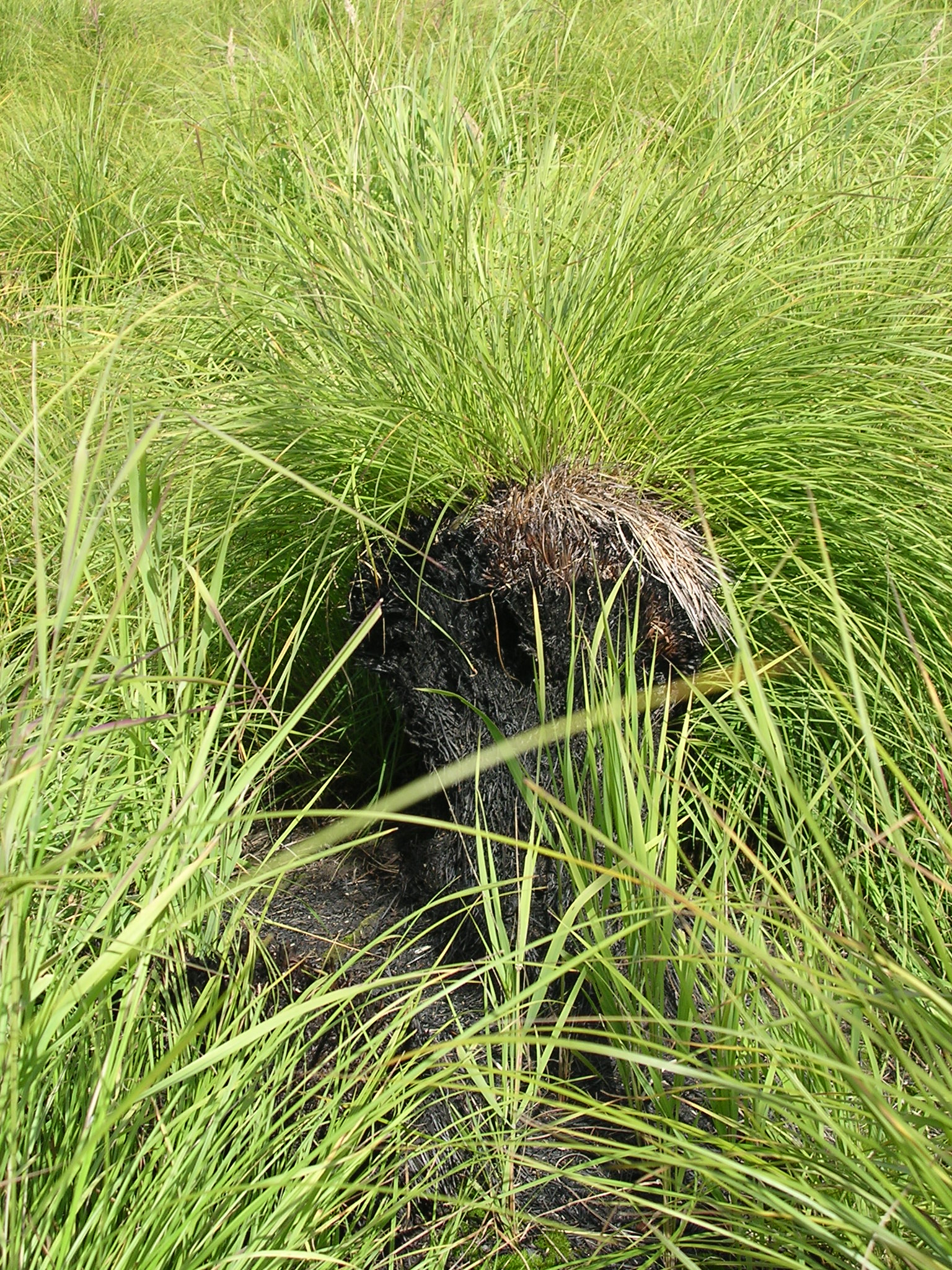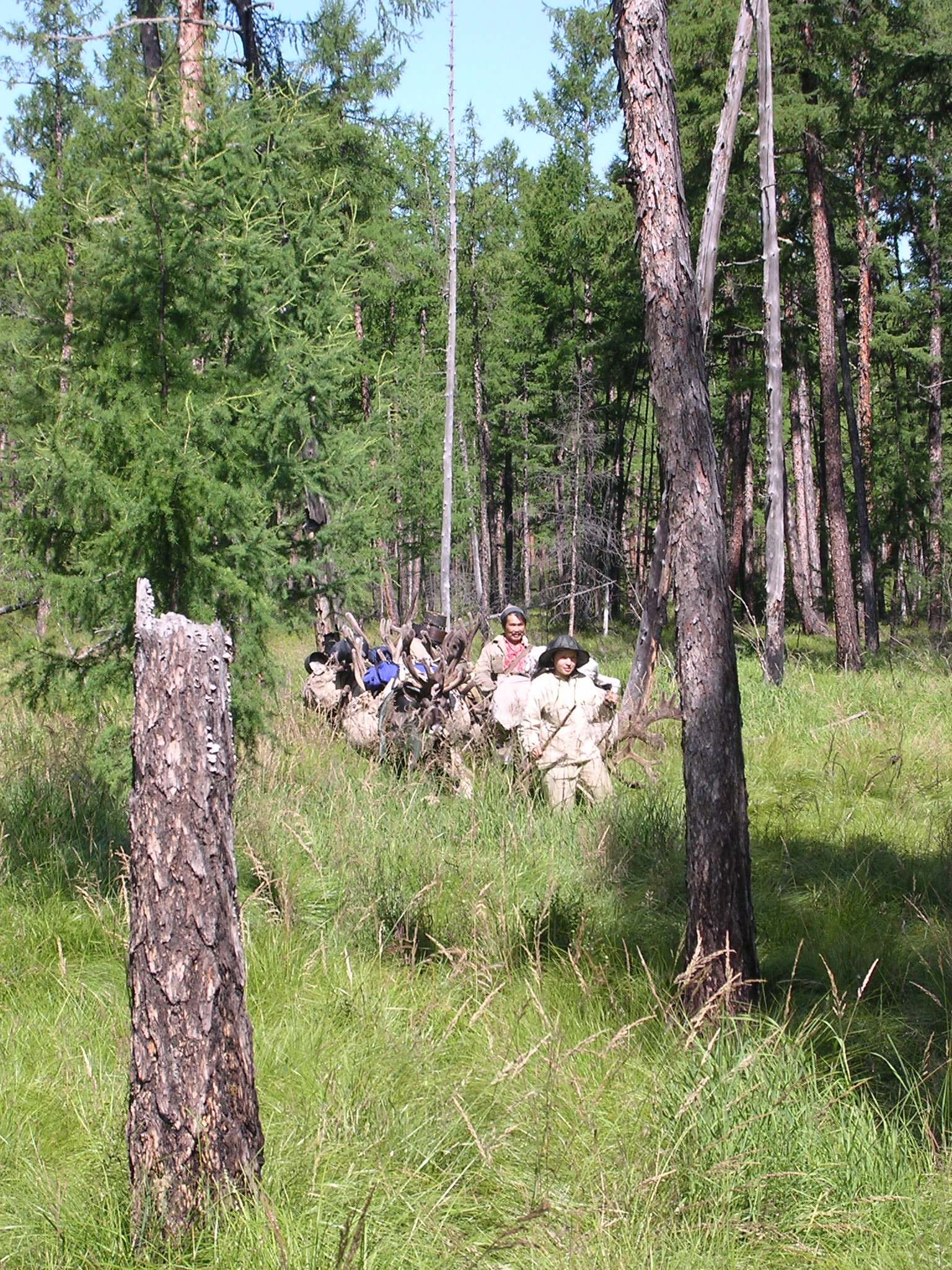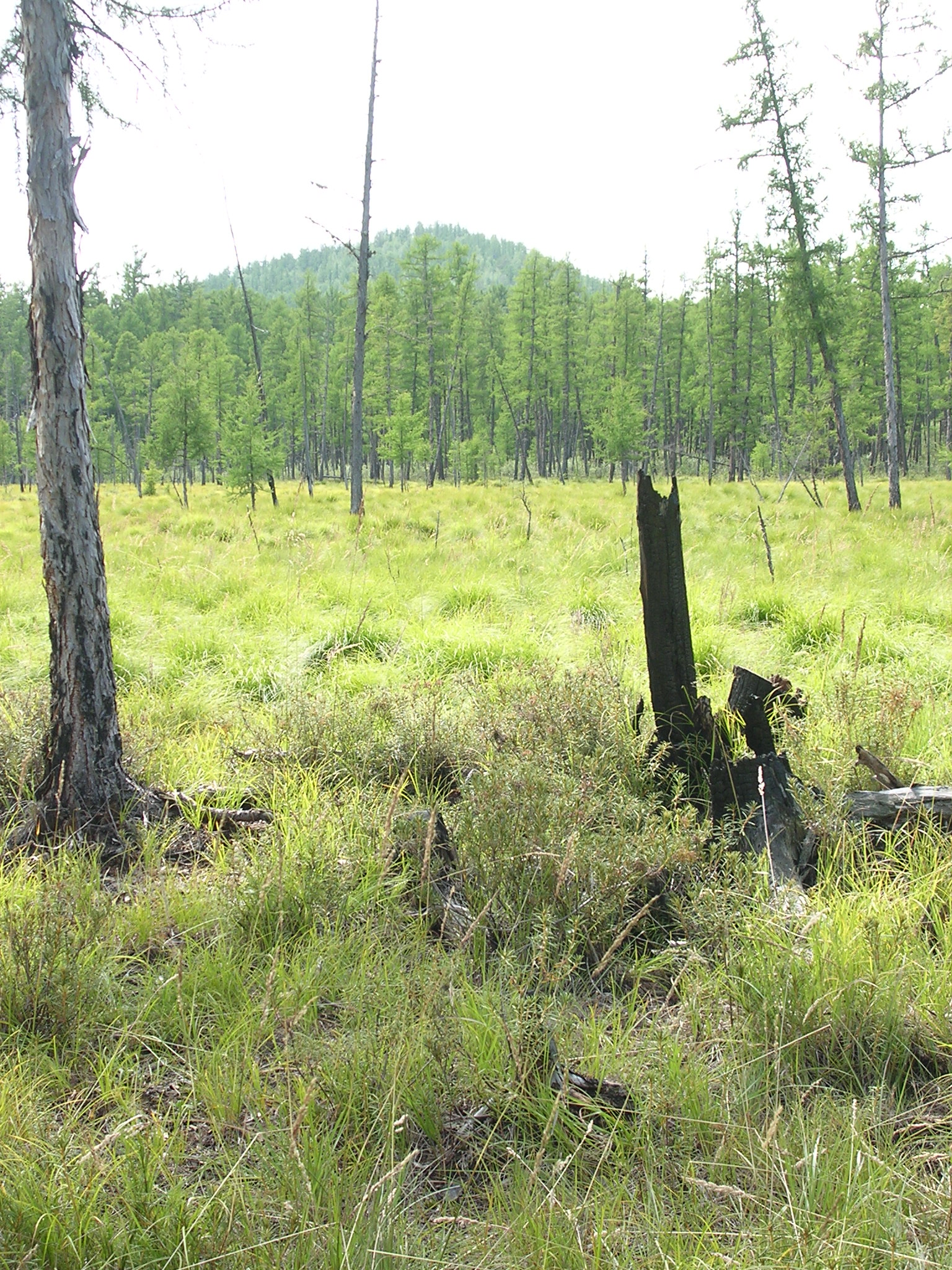Evenki peatland grass nirgete brings reindeer home
Community: Tungokochen, Zabaikal Krai, Russia
People: Evenki Orochen
Evenki peatland grass nirgete brings reindeer home
One of the indigenous peoples of Eastern Siberia – Evenkis (Orochens) – are renowned for their skill in keeping reindeer. Domestic reindeer are kept in a delicate balance between being reliant on people and having the skill and will to forage the taiga independently. An important part of being a skilled reindeer herder is to create an environment that attracts reindeer without having to search for them or to keep them in encloses. An important ally is the grass nirgete ниргэтэ which grows on hummocks in marshland at the bottom of valleys. Nirgete is one of the first grasses to grow in the early spring. It attracts animals, both domestic and wild, who are tired of cratering through snow to find frozen plants, drawing them down from the higher ridges where the snow is then. Nirgete-grass can be encouraged to grow by conducting regular controlled burns across the meadow. A managed meadow is known by the Evenki name kever кэвэр. The controlled burning is done in the spring before the snow begins to melt in the forest. The burning clears out dead and dry grass and encourages the growth of nirgete and other valuable plants as well such as blueberries.
Dried nirgete was once used to pack the soles of skin footwear to create a protection for the feet. The term nirgete is not a botanical term but used in Evenki to denote a grass the grows in meadows. In some regions it denotes cotton grass (eriphorum), and in other regions prunella. The root nirgi- evokes sounds associated with reindeer. It is possible that meadows of nirgete were used to encounter wild reindeer before they were brought into domestication.
The management of kever peatlands in this region has been fraught. The forests in Zabaikal’ have been and still are subject to uncontrolled burning. In the early post-Soviet period when these photographs were taken, uncontrolled blazes could be caused by the discarded stages of rockets launched from a nearby military base. Further problems are caused by poachers who sometimes set fire to wooded forest in mid-Summer in order to clear vegetation quickly allowing them to gather discarded reindeer antler for sale. The managed keveril in these photos along the Bazarnaia river are located quite far from local settlements, making it difficult for hunters and herders to stay with their kin or to trade for produce.
Nirgete grass lends a unique quality to taiga independence. It is not consumed by humans, but instead by the constant companions of Evenkis in this area – their reindeer. Given that it draws reindeer home it helps to build a self-sufficient landscape.
Pictures
Reading Links
Anderson, D.D. (2006). Zhilishcha, mesta khranenii͡a i letnie postroĭki ėvenkov-orochenov: narodnai͡a arkhitektura okhotnikov-sobirateleĭ v postsovetskikh uslovii͡akh. Izvestii͡a Laboratorii drevnikh tekhnologiĭ (4): 333-339. http://ildt.istu.irk.ru/_sys/mod/attach.php?journals/2006/1/articles/23/Anderson_D_G_Nakhshina_M.pdf
Anderson, D.G. (2006). Dwellings, Storage and Summer Site Structure among Siberian Orochen Evenkis: Hunter‐Gatherer Vernacular Architecture under Post‐Socialist Conditions. Norwegian Archaeological Review 39 (1):1–26. https://doi.org/10.1080/00293650600703894
Anderson, D.G. (2011). Shamanistic Revival in a Post-Socialist Landscape: Luck and Ritual among Zabaikal’Orochen-Evenkis. In Jordan, P. (ed.) Landscape and Culture in Northern Eurasia. Left Coast Press: Walnut Creek, 71-95. https://doi.org/10.4324/9781315425658
Acknowledgements
I would like to acknowledge the members of the work-unit Beiun from Tungokochen, and especially their leader Nikolai Aruneev, who shared their knowledge about their home. This material was documented in July 2004.



